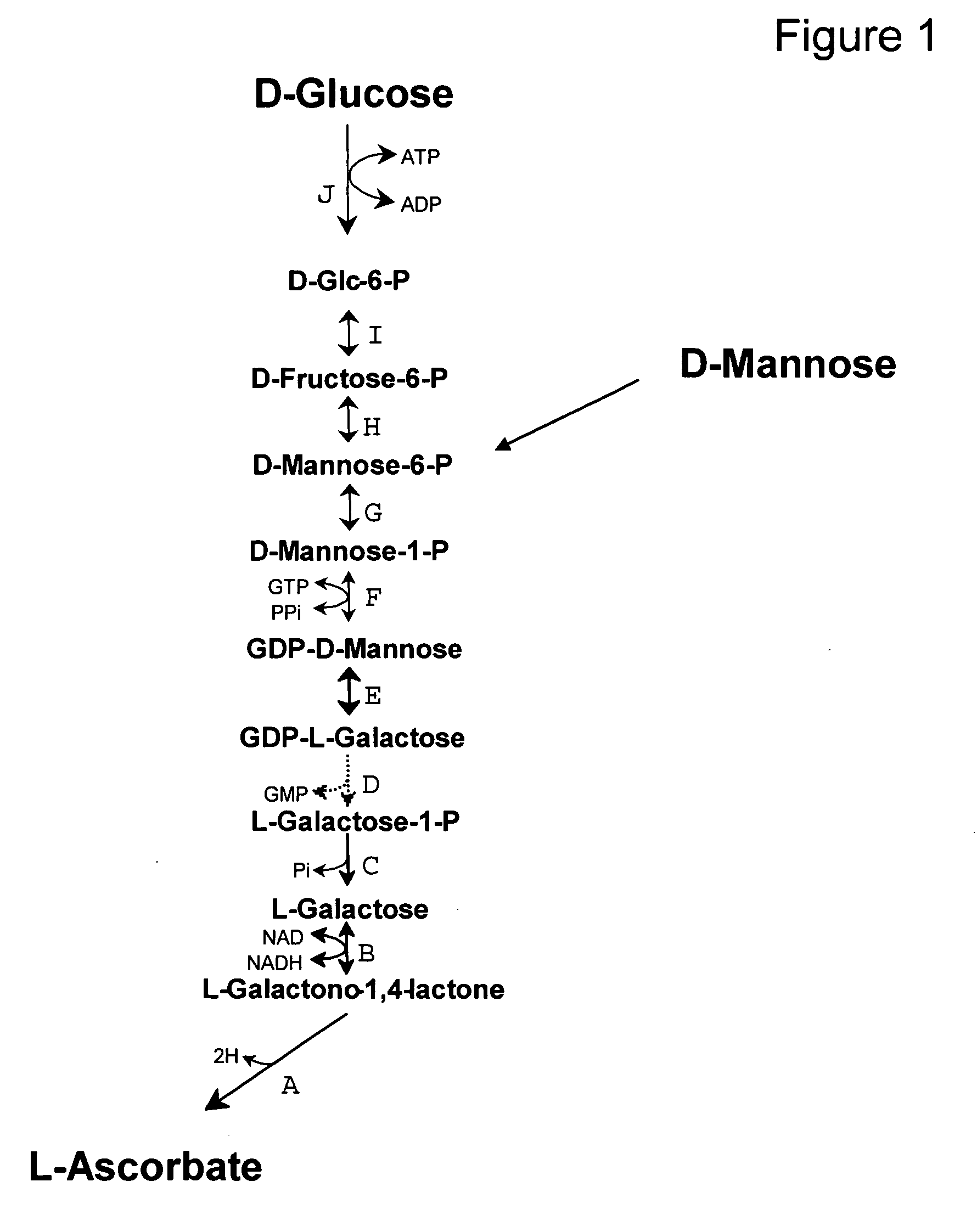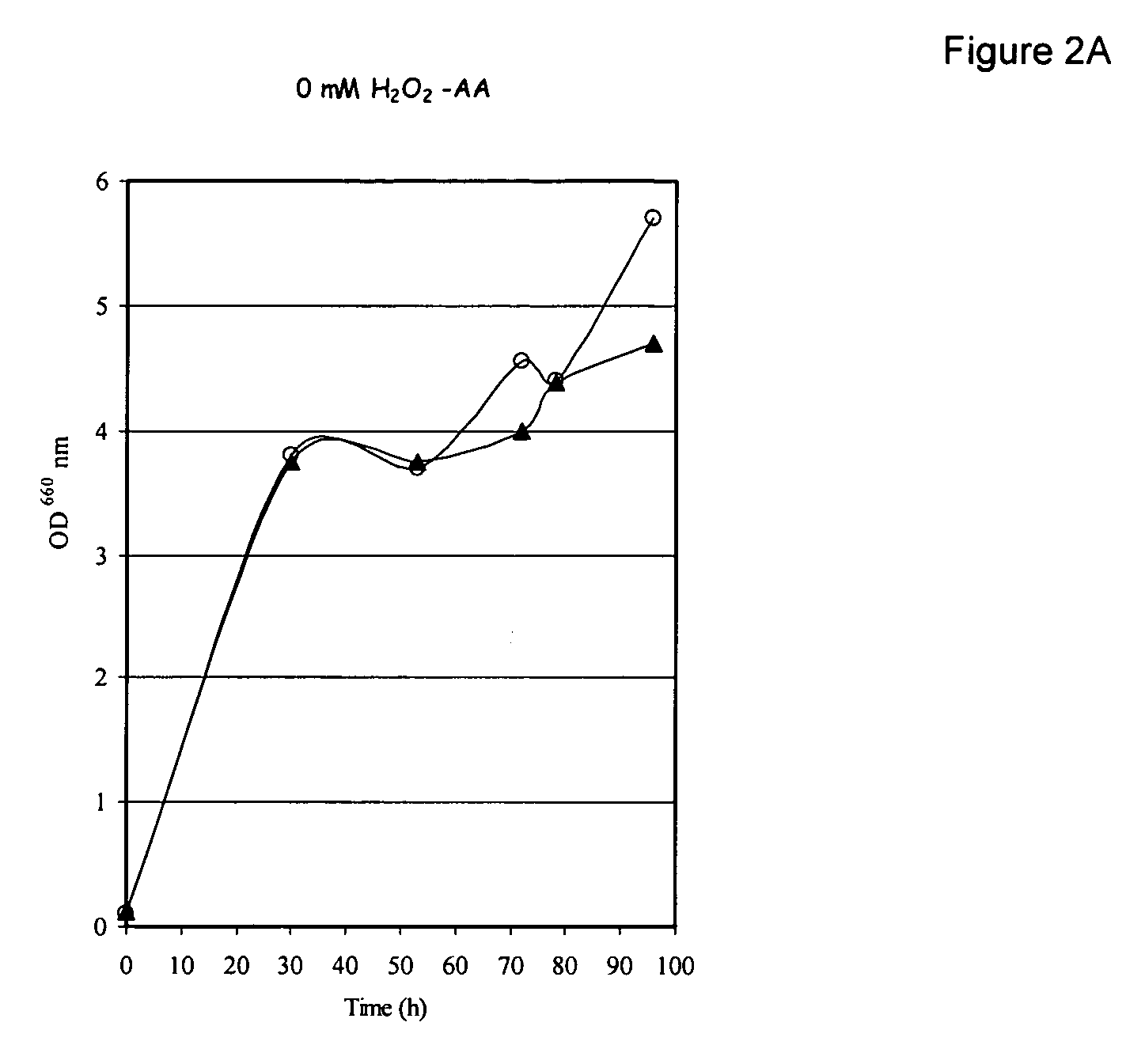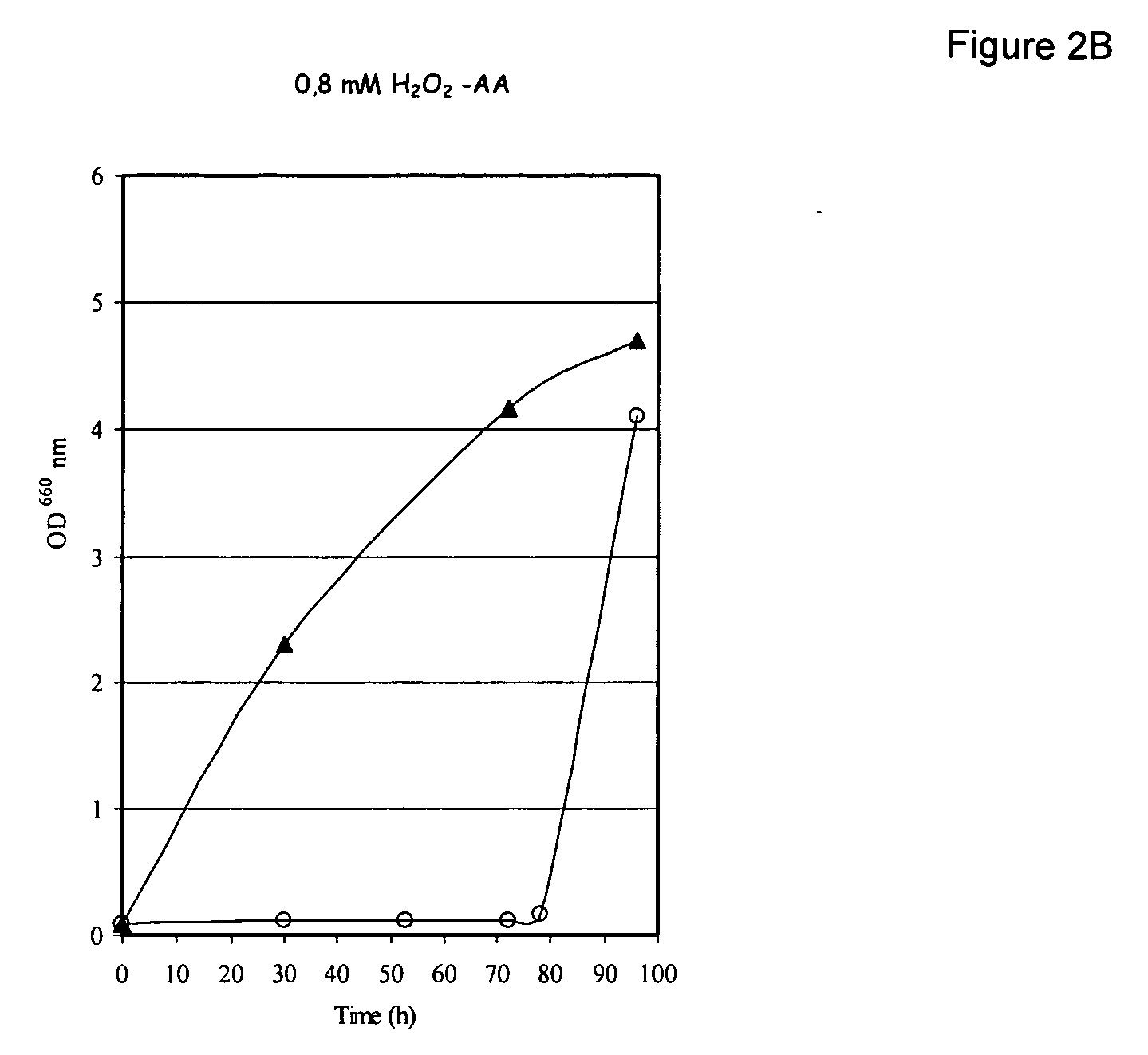Increase in stress tolerance with ascorbic acid during fermentation
a technology of stress tolerance and ascorbic acid, which is applied in the field of increasing stress tolerance with ascorbic acid during fermentation, can solve the problems of lower or zero production of products, lower or zero productivity, and higher or lower metabolic activity
- Summary
- Abstract
- Description
- Claims
- Application Information
AI Technical Summary
Benefits of technology
Problems solved by technology
Method used
Image
Examples
examples
[0108] The following examples are included to demonstrate particular embodiments of the invention. It should be appreciated by those of skill in the art that the techniques disclosed in the examples which follow represent techniques discovered by the inventors to function well in the practice of the invention, and thus can be considered to constitute preferred modes for its practice. However, those of skill in the art should, in light of the present disclosure, appreciate that many changes can be made in the specific embodiments which are disclosed and still obtain a like or similar result without departing from the spirit and scope of the invention.
Materials and Methods
[0109] 1. Determination of Ascorbic Acid
[0110] Ascorbic acid was determined spectrophotometrically following the method of Sullivan, M. X. et al. (1955), Assoc. Off. Agr. Chem., 38, 514-518). The sample (135 μl) was mixed in a cuvette with 40 μl of H3PO4 (85%). Then 675 μl of α,α′-Bipyridyl (0.5%) and 135 μl FeCl...
PUM
| Property | Measurement | Unit |
|---|---|---|
| pKa | aaaaa | aaaaa |
| pH | aaaaa | aaaaa |
| pH | aaaaa | aaaaa |
Abstract
Description
Claims
Application Information
 Login to View More
Login to View More - R&D
- Intellectual Property
- Life Sciences
- Materials
- Tech Scout
- Unparalleled Data Quality
- Higher Quality Content
- 60% Fewer Hallucinations
Browse by: Latest US Patents, China's latest patents, Technical Efficacy Thesaurus, Application Domain, Technology Topic, Popular Technical Reports.
© 2025 PatSnap. All rights reserved.Legal|Privacy policy|Modern Slavery Act Transparency Statement|Sitemap|About US| Contact US: help@patsnap.com



